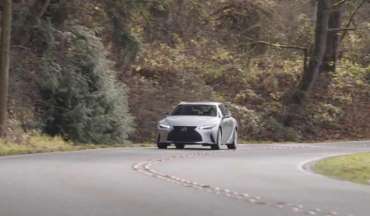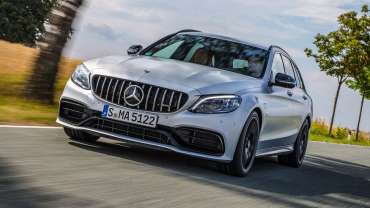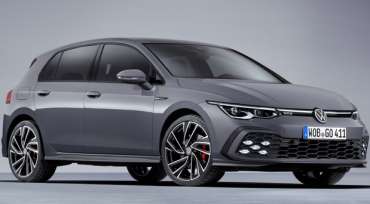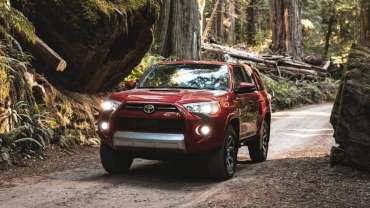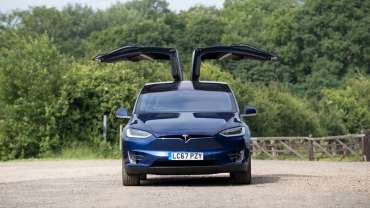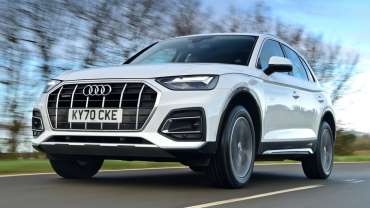
Worldcarblog.com
VIDEO: Test 2021 Lexus IS 300
For 2021 Lexus has updated the looks, tech and performance of the popular IS 300 Sedan. Can Lexus fend off the competition in this segment? We have a complete look.
Driven: The 503-HP 2020 Mercedes-AMG C63 S Wagon You Can't Have
The compact AMG station wagon is a sportier utility vehicle—but it's not available here.
Many Americans still think of "mom" and "station wagon" in the same sentence, ignoring that the ubiquitous modern SUV is essentially the 21st century's Wagon Queen Family Truckster. But in Europe, wagons are still cool, still the preferred utility vehicles for people with sporty lifestyles. And the faster the wagon, the cooler it is. Which makes the 2020 Mercedes-AMG C63 S wagon about as cool as long-roof load luggers come.
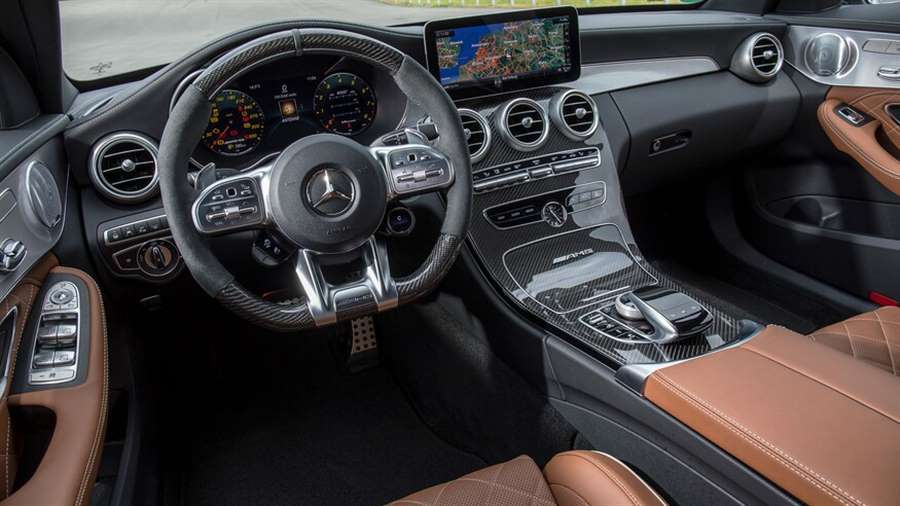
The C63 S wagon is of course the E63 S 4Matic+ wagon's little brother, 11.5 inches shorter, 3.8 inches narrower, 1.3 inches lower, and rolling on a 3.9-inch-shorter wheelbase. It's powered by the same 503-hp, 516-lb-ft version of Daimler's versatile 4.0-liter twin-turbo V-8 as the AMG GLC63 S Coupe sold Stateside, rather than the big-hitter 603-hp, 627-lb-ft engine of the E-Class version. Can't have the 600-pound-lighter—and, in the U.K., the 23 percent cheaper—little brother upstaging things, can we?
The C63 S wagon's lighter weight is partly because, well, it's smaller, and also because it doesn't have the bigger car's 4Matic+ all-wheel-drive system. By Daimler's own numbers, it's about half a second slower to 62 mph than the E 63 S 4Matic+ wagon, which suggests a zero to 60 time of about 3.5 seconds. Given the heavier, all-wheel-drive AMG GLC63 we tested a few years back recorded a zero to 60 time of 3.2 seconds, that might be a touch pessimistic. And there's nothing in it in terms of top speed between the two; Daimler says the E 63 S is good for 180 mph, while the C63 S will do 174.
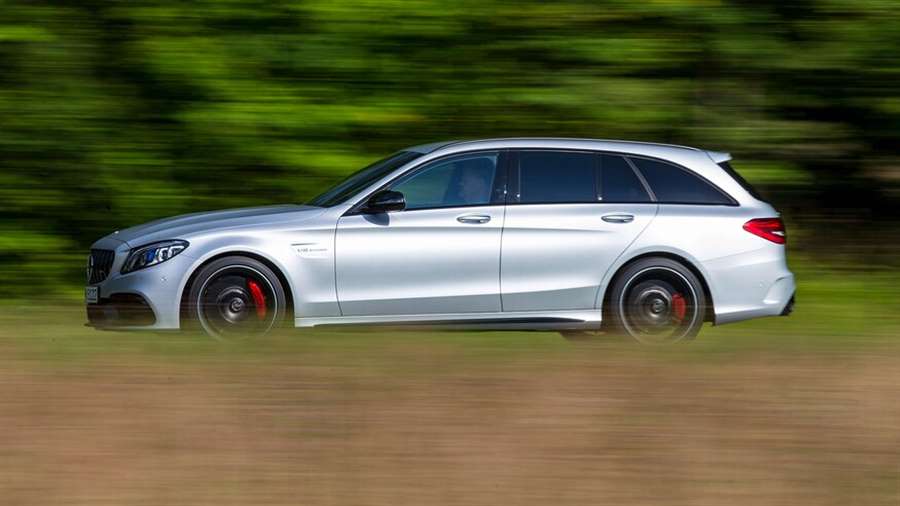
A 2018 face-lift added the toothy AMG grille up front and a new rear diffuser, plus the option of 19-inch forged alloy wheels instead of the regular 18-inchers. Interior upgrades included a 12.3-inch digital dash and 10.5-inch infotainment screen, a flat-bottomed steering wheel with touchpad controls on the spokes, and a rotary mode controller similar to Porsche's Sport Chrono unit.
While the engine remained untouched, the old seven-speed torque-converter auto was replaced with AMG's nine-speed wet-clutch automatic, and it added an e-diff. AMG Traction Control—the same nine-stage system first seen on the AMG GT R—was made standard on the S. The AMG Dynamic Select system offers five predetermined driver modes, along with an Individual mode that allows you to choose the engine, gearbox, steering, and exhaust settings. AMG Ride Control manages the steel springs and adaptive shocks, and the AMG Dynamics system enables you to manage the ESP settings and torque distribution to the rear axle through four further settings: Basic, Advanced, Pro, and Master.
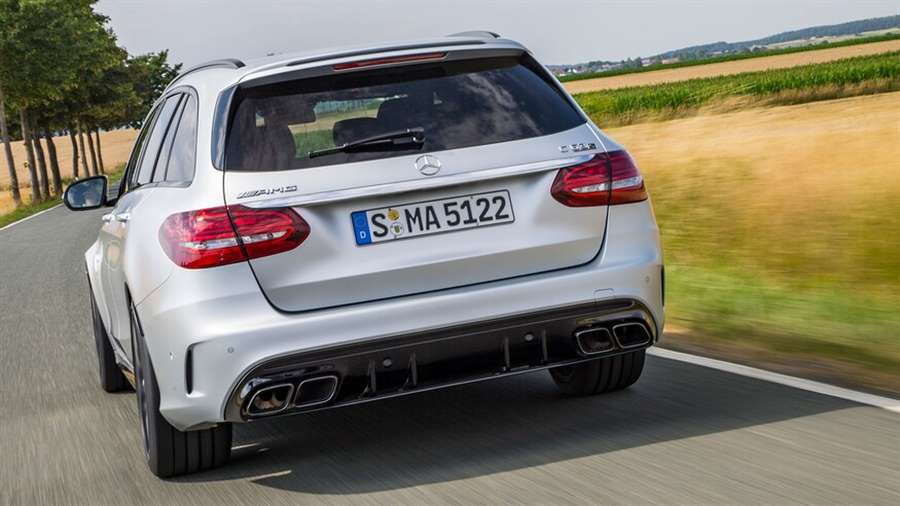
What's it all add up to? A rambunctious little thug of a wagon, that's what. Next to the C63 S, the E63 S seems calmer, more mature—if any station wagon with Saturn V thrust, a rolling thunder soundtrack, and Drift mode could be called calm and mature. The C63 S feels livelier, noisier, busier, especially at 120 mph or more on the autobahn, where the shorter wheelbase and different suspension settings mean high-speed turn-in response feels more aggressive, and there's much more vertical motion through the chassis. The rear drive balance is real rather than digitally remastered; accessing Drift mode in this thing simply requires turning the traction control off, instead of the video-game cheat code sequence of button presses, paddle pulls, and menu fiddling E63 drivers must engage to defeat the AWD and access its rear-drive mode.
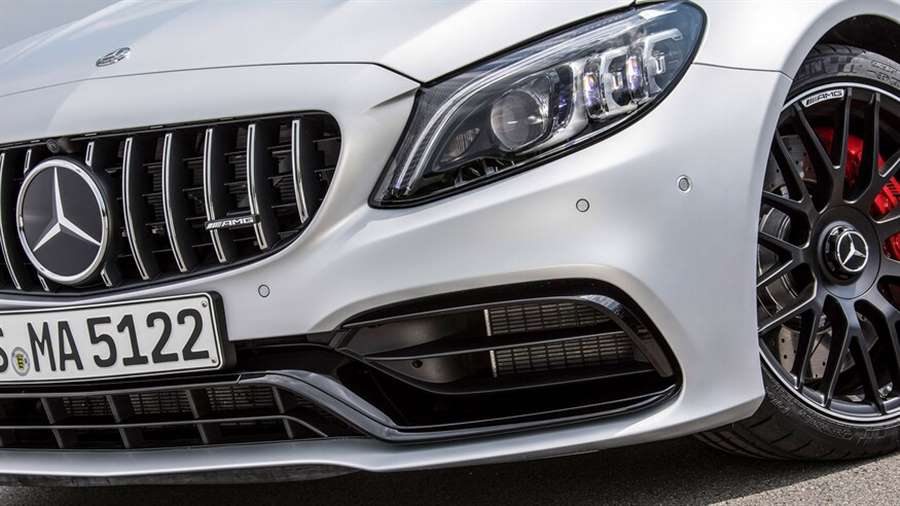
It might not have the brute power of the E63 S, but Lordy it's still fast. On a trip that saw us in a single day dispatch the 700 miles between London and Dresden in eastern Germany, we averaged 100 mph on one 55-mile stretch of autobahn that included more than 5 miles of slow running through construction. The C63 S cruised easily at 130-140 mph when traffic allowed, and on one stretch we saw an indicated 156 mph.
The best thing about the C63 S wagon? Not just that it flies, but that it flies below the radar. Unless you're an enthusiast, it could be one of tens of thousands of diesel C-Class wagons running around Europe on fancy AMG wheels. There's something deeply engaging about a supercar that to most people looks like an ordinary grocery getter. It has utility. But it's very, very sporty.
Source: motortrend.com
The Volkswagen Golf 8 is the best-selling car in Europe
Last year, the Volkswagen Golf was again the best-selling car in Europe with around 312,000 units sold. Also, the Golf 8 was chosen as the best car in Germany by Auto Motor und Sport, Auto Bild and Auto Zeitung.
After its introduction at the end of 2019, the Volkswagen Golf 8, despite the corona virus pandemic, took first place in car sales in Europe and Germany. In 2020, more than 312,000 units were sold on the European market, and 134,000 in Germany.
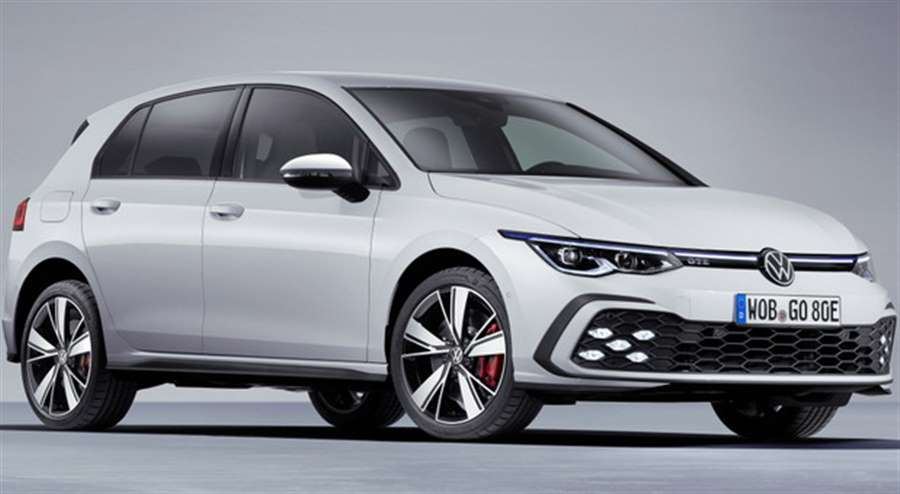
The Golf 8 has been available in all major versions since its introduction, along with the GTI, GTD and GTE models which has given it a special wind in the back. High demand for hybrid models has also contributed to this success. That’s why by the end of the year, every third Golf sold was a hybrid.
In Germany, the new Golf 8 has been named the best car in the compact class. He defeated 16 opponents in tests conducted by Auto Motor und Sport, Auto Bild and Auto Zeitung.
What Will the 2023 Toyota 4Runner Have to Offer?
Since 1984, the Toyota 4Runner has made its mark in our lineup as a powerhouse SUV. It’s getting close to having a cult following because of its versatility with its on and off-road capabilities. This is what makes it a great option for any driver, not just those that like to take their adventure off the pavement. Anyhow, at Toyota of N Charlotte, it’s safe to say we’re BIG fans of the Toyota 4Runner, and we’re eager to announce that the ever popular SUV will be redesigned in 2023. Take a look at the details on what to expect from this new Toyota.
What Will the New Toyota 4Runner Bring to the Table?
The current N Charlotte Toyota 4Runner model has a 4.0L V6 engine with Dual Independent Valve Timing. Rumor has it that the 2023 model will offer more than just one engine option. Even though many fans are into the current configuration, adding a couple of options can increase the horsepower, torque, fuel efficiency, and overall create a more versatile SUV than what it already is! A turbocharged option could also be in the works—this will definitely bring an amazing drive time.
It’s possible that a hybrid option for the new Toyota 4Runner model will be in the works as well. As a company committed to going green, mixing this with a popular N Charlotte model is just the right move for the company. Not only does a hybrid model offer better fuel efficiency, it also offers an eco-friendly performance with fewer emissions.
As for looks, the current N Charlotte Toyota 4Runner has a muscular design along with defined lines and features that are out of this world. For a new Toyota 4Runner redesign, the anticipation is getting fans anxious because they know that when Toyota redesigns a model, it’s a drastic change. Our guess is that parts like the back end, front grille, lighting schemes, etc., will see changes. Other accessories like tow kits and roof baskets could even become standard. Thus, there’s reason to believe that the 2023 model will look different.
If an exterior overhaul is added, then changes in the interior would also be necessary. We predict new options are coming in for interior trim materials and fabrics, as well as more space with better distribution. Infotainment, safety, efficiency, and convenience features are predicted to be be added for a better drive time!
Test Drive the N Charlotte Toyota 4Runner Today!
We’ve obviously been very eager for the arrival of the 2023 Toyota 4Runner, but for now were going to in the moment and appreciate the current model of the 4Runner. Test drive the 2021 4Runner or any other new Toyota on our lot. You can get the feel of driving on of our renowned new Toyotas. Make your way to Toyota of N Charlotte today! We’re located at 13429 Statesville Rd just off I-77 at exit 23 in Huntersville. You can also call us to schedule an appointment at (704)875-9199.
Source: toyotaofnorthcharlotte.com
Tesla Model X review: clean, clinical, conspicuous
The only thing more volatile than a Tesla fanboy's mood swings is the company's share price. But away from Twitter and Instagram devotees, the Model X cuts an imposing, whale-shaped hole into the electric car chasm. We'll leave it to you to make puns about it serving a porpoise...
Falcon doors (more on those later), an iPad-like cockpit screen, fart sound effects, and an unholy 0-62mph time of 2.6 seconds for the fastest model help the Tesla stand out from the crowd. But the crowd is circling, and growing.
In case you've missed them, Audi, Mercedes, and Jaguar all have electric SUVs now in the shapes of the i-Pace, EQC, and Audi e-Tron. While BMW's effort, the iX3, is now beginning to trickle into showrooms.
Sure, they're all more compact than the Model X - closer in size to the forthcoming Model Y in fact - but in these early days of manufacturers fleshing-out their electric ranges it's fine to combine the choices together.
Best electric cars: the CAR guide
With that pressure mounting, is the Model X still the car to go for if you want something that's flashy, huge, and green?
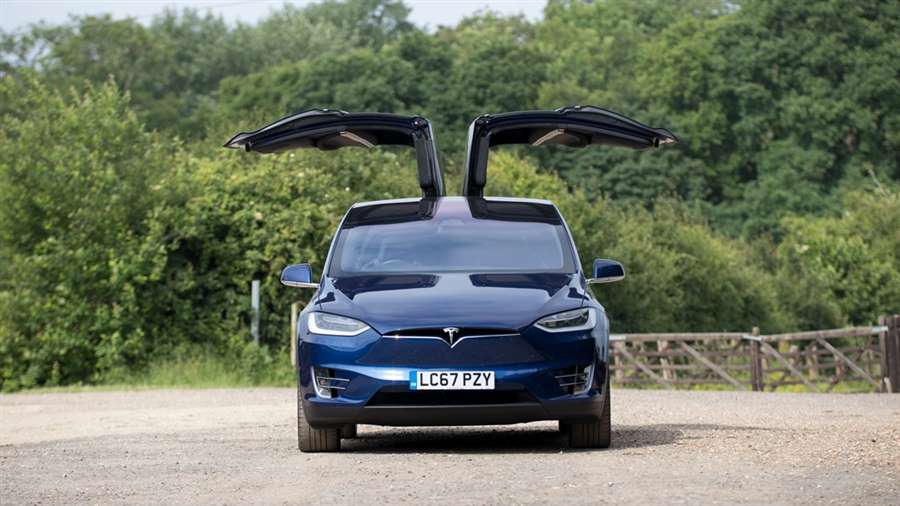
More like Tesla Model XXL...
Tesla has matured since the days of the original Roadster, and now Elon Musk’s EV company has a distinct design language. Featuring a minimal grille with no air inlets – a benefit of not having to cool down the byproducts of combustion in a traditional engine – the Model X looks like the updated Model S – but unlike anything else on the road.
The Tesla Model X is just as distinctive from the reverse angle, but those clean lines betray just how huge it is. And it really is vast, so you can get it in five-, seven- or six-seat configurations.
Those Falcon Wing doors
Tesla’s Falcon Wing doors set the Model X apart from the Model S, as well as every other vehicle – and they get their own section in this review. While they appear to be a gimmick – and often feel like one – they’re sometimes genuinely useful.
To begin with, you can’t help but feel they’re made for early-adopters to flaunt at Superchargers like peacocks. The whole process seems to take a while, and the doors don’t always unfurl in a smooth or uniform way, giving the impression they’re rather flimsy.
That’s a shame, because there were times when the doors really came in handy. When parked close to other cars, for instance, they allow multiple passengers to hop in and out, where other doors would require a squeeze. Tesla says they’re invaluable for elderly passengers too, and you can see why.
But the doors can also be a nuisance, and there were times we’d try to avoid using them. Forgotten a bag in the back? Can’t stretch round and get it from the driver’s seat? Nope. Moments later, seconds later, you’ve got your bag, but onlookers think you’re trying to show off.
Are they cool? Debatable. Are they useful? Sometimes. Perhaps a Tesla Model X with one conventional door and one Falcon-wing would be a suitable halfway-house - although this presents problems for building cars for right- and left-hand drive markets.
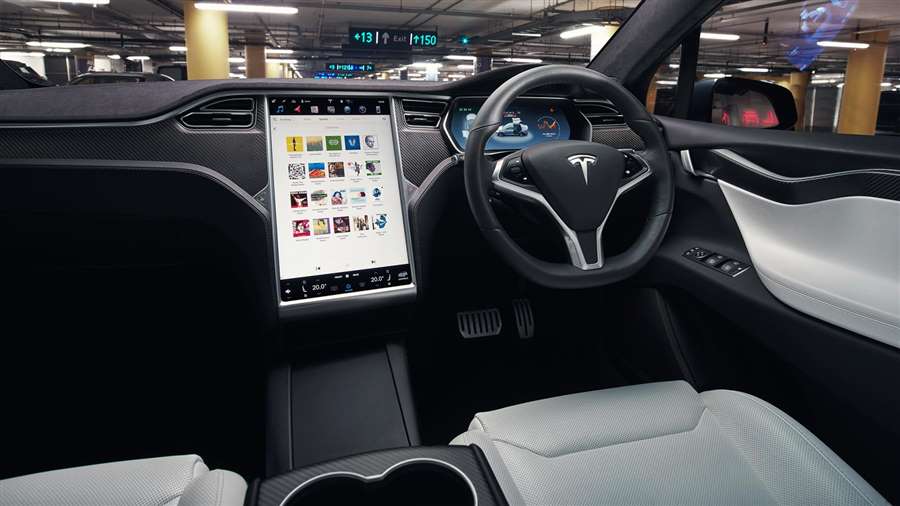
Is the Tesla Model X practical?
Whatever you think of the doors, they’re part of the Model X’s focus on practicality, and that design ethos is evident inside the car, too. Three seating configurations are available, and seats can be electrically folded and moved like parlour tricks: lightly press a hidden button and headrests fold down, for example.
With the rear two seats folded away the boot isn’t small, and if you’re still not happy, there’s always the froot (front boot to those allergic to naff portmanteaux). However, all that empty space doesn't always translate to spaciousness; when specified with two seats in the middle row, they're positioned close to the rear doors with an overly large gap between them, rather than adding elbow room for the outer edge. Even the front seats offer a more balanced amount of elbow room on either side.
Seven-seat fully-electric SUVs are few and far between. The e-Tron, iX3, i-Pace and EQC are all strictly five-seaters. The Model S can do you seven-seats, while if you're really not bothered by SUVnes, there are always the Mercedes EQV and Nissan e-NV200 car-derived vans.
What’s it like to drive?
Imagine a Model S with more height and weight, and you’re pretty much there. Just like the saloon, the Model X offers a relatively firm ride and swift linear acceleration, but only really reminds you of its 2.3 tonnes when you brake or turn. The performance is fun on slip roads and genuinely useful on the motorway, but don’t think this is a Stelvio Quadrifoglio rival. It just happens to be whisper-quiet and quick.
If acceleration is too fast for you, putting the car in Chill mode will make the performance a little more laidback - and handily extend the battery range too.
Like its siblings, the Model X’s steering is more of a switch than a precise instrument. Changing it to a sportier mode certainly helps, but not much. It may be a family car, but it’s an area where Tesla will need to improve on to compete with the work of more experienced chassis engineers if it wants to appeal to drivers who well, enjoy driving.
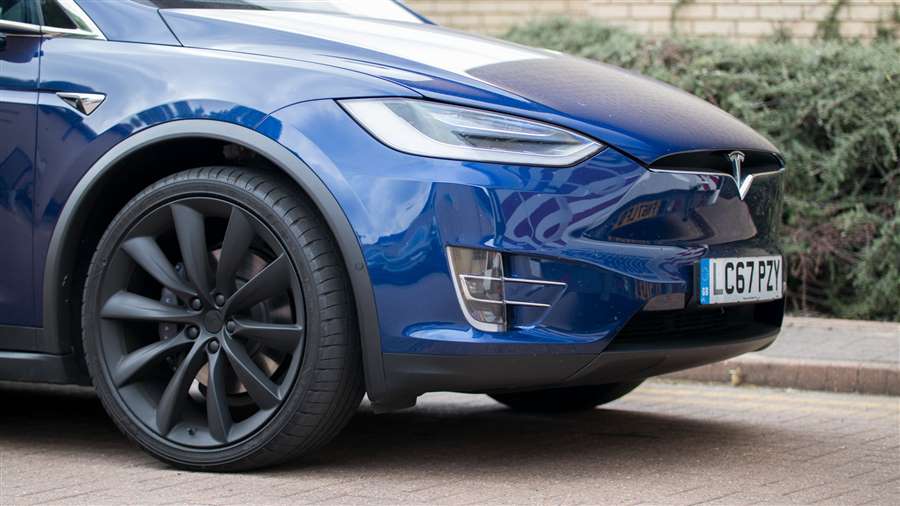
Of course, Tesla's ultimate ambition is that you won’t be driving in the traditional sense all the time anyway. Our Model X was fitted with Tesla Autopilot, and it remains one of the best driving assistance packages on the market today. Once the system decides the road is suitable, Autopilot is engaged with two pulls of the dedicated stalk, and that’s pretty much it. Just twist the stalk to pick the distance between you and the car ahead.
Traffic jams, motorway lane changes and sliproads are handled swiftly and smoothly, though, perhaps reassuringly, it errs on the side of aggressively cautious when confronted with cars that wander around their lanes too much. Outside of the motorway network, the usual parking assistance and ability to just let it creep at urban speeds following the car in front is enough to lower the heart rate somewhat.
European legislation currently limits the level of autonomous driving allowed, more than the technology in the car. In America, Autopilot can be seen handling long drives, albeit with the driver present - in Britain, the Tesla's Autopilot is suitable for taking the strain out of long motorway drives but still requires a constant hand on the wheel, and clear input to show someone other than the computer is paying attention. This also limits Tesla's ability to self-park and summon in the UK - for now.
Even when Autopilot isn’t engaged, the Tesla continually advises you on your proximity to other vehicles, and will even identify lorries and motorcycles in your path. That small detail helps to build an element of trust between you and the car, and means when you do use Autopilot, you’re aware the Tesla has it covered.
But it’s not without faults. Lane changes are a little awkward when using Autopilot (nudge the indicator, and it'll swap lanes for you), as they seem to take an age, and often result in you doing the steering yourself. What’s more, road users with loose lane-discipline can also scare the Tesla into dramatically slowing down.
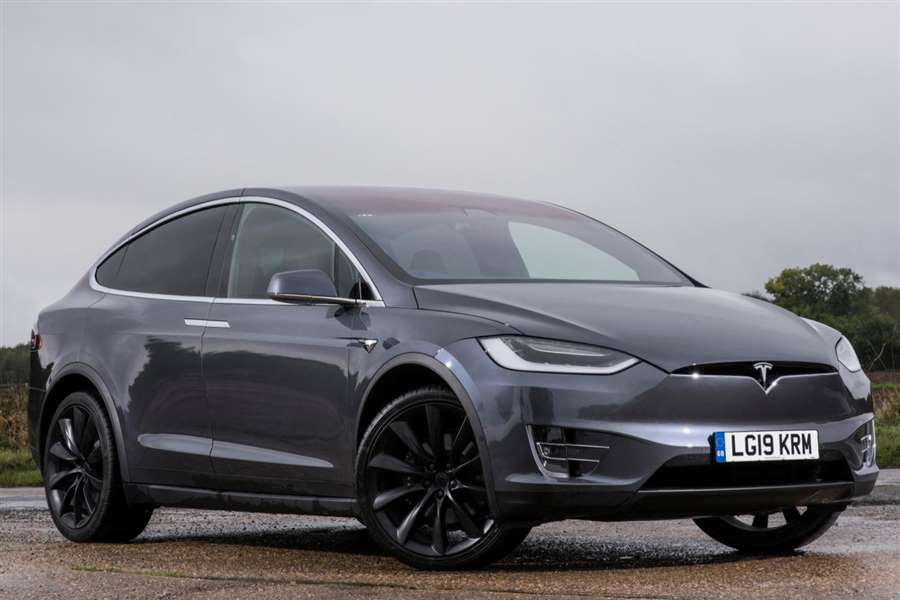
But will I be able to charge my Tesla Model X?
The charging experience will largely be determined by where you are in the country and what you do with your Model X. The Tesla Supercharger network is growing and using one is how all electric car charging should be; plug it in and within seconds you can see the range increasing as it gets a full 120kW up its socket. Filling from empty takes less than one hour - and most users will typically be topping up rather than 'brimming' their batteries.
While you can get chargers installed in your home, we were able to complete trips between Peterborough and London – along with local errands – by just using the Superchargers at Bishops Stortford on the way up or down. Throw in the ability to charge at home and at work, and unless you're venturing very far, and into an area of lower charging coverage, range is hardly worth thinking about. It just works.
When you do have to charge, though, the experience is painless. After plugging in, you can either hang around and follow the charging progress on a smartphone app, or just wait in the car – though fan noise during charging can get quite loud.
One tip though. If you’re able, it’s best to charge to full capacity even if you don’t need to. That way, when you arrive at your destination, there’s still juice to make it to another charger on the return leg.
What else do I need to know?
Adding in the six- or seven-seat options costs extra but is definitely worthwhile, otherwise you might as well stick with the more conventional Model S.
And the Tesla Model X UK price? Starting at £87,980 for the long-range model or £102,980 for the Performance - with 'ludicrous mode' and a slightly reduced WLTP range - it's far from an enabling technology that will change the world; for that, you'll need the smaller, more conventional Model 3.
Tesla Model X: verdict
Four years on from launch, the Tesla Model X isn’t the leap ahead it used to be, but it’s still a quirky, intuitive SUV – and one that’d probably suit some families well. The Model X is still disruptive, and from the sci-fi panoramic windscreen to doors that open for you, the Tesla still gives you some things that other cars just don’t have.
At the time of writing, the Tesla Model X wins by default in this sector. But the Jaguar i-Pace, Mercedes EQC and Audi e-Tron are all close. What these cars lack in range, they make up for in dynamics and build quality.
Source: carmagazine.co.uk
How to Best Prepare for A Winter Driving Test
The pandemic has seen both learner drivers and instructors affected well into the end of the year 2020, as the weather turns colder and the nights draw in. But the good news is that in all tiers in the UK, lessons and tests can continue to take place.
If you’ve been having driving lessons in Birmingham and are expecting to take your test in a West Midlands test centre, then you are likely to have been waiting several weeks to take your final driving test. And if you are still waiting for that special date, you could see your test taken place in the winter months of January and February. So, if you want to make the best use of your time, here are some tops tips for preparing to take a driving test in winter.
Stopping distance, thinking time and braking distance
You may have come across this topic in your theory test, but it’s worth reminding yourself of the difference between stopping, thinking and braking distance, and the various factors that can affect these whilst driving.
The thinking time is the time it takes you to react to the situation when you are driving, with the thinking distance being the amount your car has travelled between reacting to the hazard and pressing the brake pedal (or reacting in the correct manner). It is impossible to apply the brakes at the same time as a car in front of you, so to work out a stopping distance you have to take this thinking time into consideration.
The braking distance is the time it takes your vehicle to stop from the moment you hit the brake pedal, and can be affected by road conditions and conditions of the vehicle – although it is unlikely to be the case for your driving test as the car will be regularly checked for faults, poor tyres and brakes etc.
Stopping distance is the total time it takes for your vehicle to stop from the moment you see a hazard or brake lights ahead of you. The stopping distance can be calculated by adding the thinking time/distance and the braking distance, and changes depending on the speed of the car and the type of weather:
- When driving in rainy and wet conditions, the Highway Code advises the stopping distance to be at least double the distance compared to a dry surface because the road will be more slippery and there can be reduced visibility in heavy rain.
- For icy and snowy conditions, the Highway Code states that your braking distance can be ten times higher than that on a standard road. This means the stopping distance will also be increased. Again, consider the thinking distance due to poor visibility.
Use your time indoors wisely
With the winter weather keeping you inside, and the likely lengthy waiting time you have until you take your driving test, you can use this time to prepare even more for that day.
One of the things you can do at home, is to improve your reflexes and reaction times, as these skills can help you when dealing with other vehicles on the road and any hazards that can appear along the way. It’s been scientifically proven that playing video games, particularly action-themed games, are beneficial as this helps you to make quick decisions in tense situations, or when there’s lot happening at once. Video games can also make your reaction time better as they can make you more aware of your surroundings. All of which are transferable skills for your driving test, as the more alert you are to your surroundings, the less likely you are to make a mistake or have an accident.
You can also use this time stuck indoors to hit the books and revisit your theory test revision. It can only be a benefit to remind yourself of the Highway Code and road signs before getting in a car with an examiner. After all, it is a legal requirement to abide by the rules of the Highway Code, but it can also make you feel more confident and relaxed about taking your test. It’s also a great way to keep up to date with the DVLA standards of driving, as it is possible that there will be some changes by the time you take your driving test. It all helps towards preparing for when you get back behind that wheel again.
Source: automotiveblog.co.uk
New Audi Q5 40 TDI 2021 review
The revised Audi Q5 40 TDI SUV delivers plenty of tech and surprising value
Verdict
The revised Audi Q5 offers useful updates when it comes to efficiency, performance and on-board technology. It still looks stylish inside and out, it’s well built and although it’s a bit dull to drive, it’s comfortable, refined and practical. The real surprise here in the most basic Sport trim is that it delivers impressive value for money, with a generous amount of standard kit.
Think premium SUV, and the chances are that you’ll think of the Audi Q5. From the way it drives to the way it’s built and how it looks, the Q5 has always been a solid choice. But the pace of development in this class is fast, so there’s a new version of the German firm’s mid-size SUV.
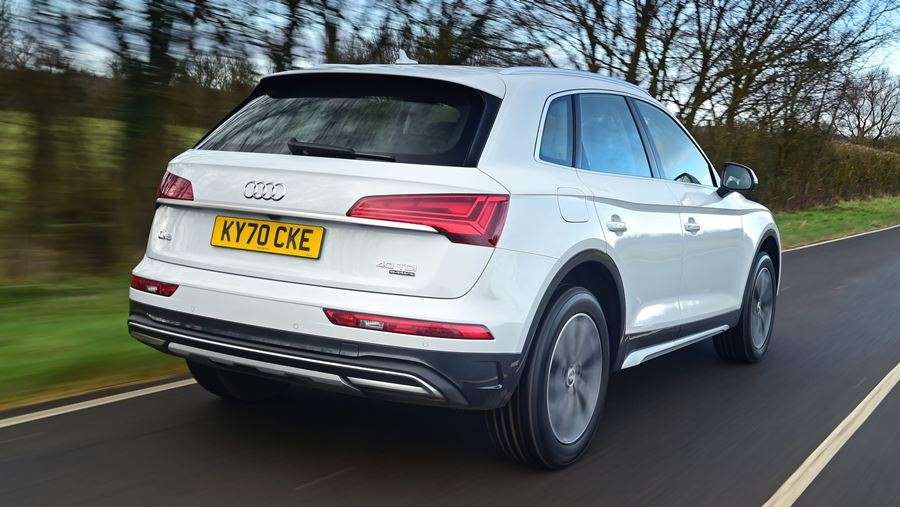
The updates focus heavily on technology to keep pace with newer models in the class, as well as revisions to the 40 TDI diesel model we’re testing here, making it cleaner and more powerful, thanks in part to mild-hybrid electrification.
The level of standard kit has taken a step forward as well, so even this entry-level Sport model could offer everything you’ll realistically need, even if on its standard 18-inch wheels it doesn’t look quite as sharp or as aggressive as the sportier S line trim that sits above it. Sport still receives new LED headlights and the same overall visual updates, with a larger, more pronounced grille that features some silver vertical bars to help it stand out. There’s a different design for the front bumper, too, while at the rear the changes are less significant. It’s a subtle but effective facelift overall.
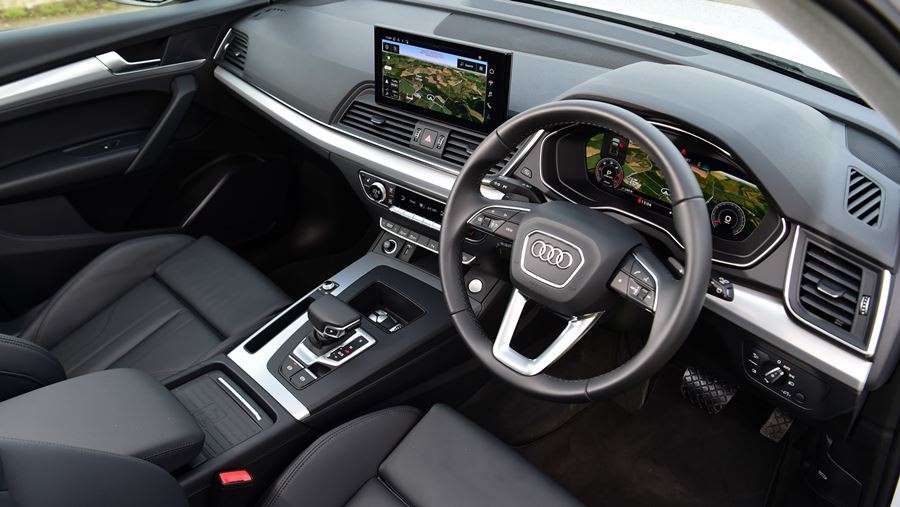
The SUV has also received the same treatment inside as its A4 and A5 siblings, with a new 10.1-inch central touchscreen as part of the MMI Nav Plus system that replaces the older scroll wheel on the transmission tunnel. There’s now a slightly awkward, rather shallow storage tray in its place, but build and material quality is still as good as you’d expect from an Audi, while the updated tech is sound. It works with the level of speed and response to your inputs you’d expect from a premium model, while there are lots of features, too.
There’s no real reason not to get on with the native system because the menus are fairly logical and easy to navigate, plus the graphics are great and the screen is well positioned in your eyeline (if maybe just a tiny bit too far away from the driver). But Apple CarPlay and Android Auto are also fitted as standard, so you can plug in your smartphone instead if you want.
On top of this you also get heated sports seats in Audi’s twin leather upholstery, three-zone climate control, cruise control, front and rear parking sensors with a reversing camera, and autonomous emergency braking with collision warning and pedestrian detection.
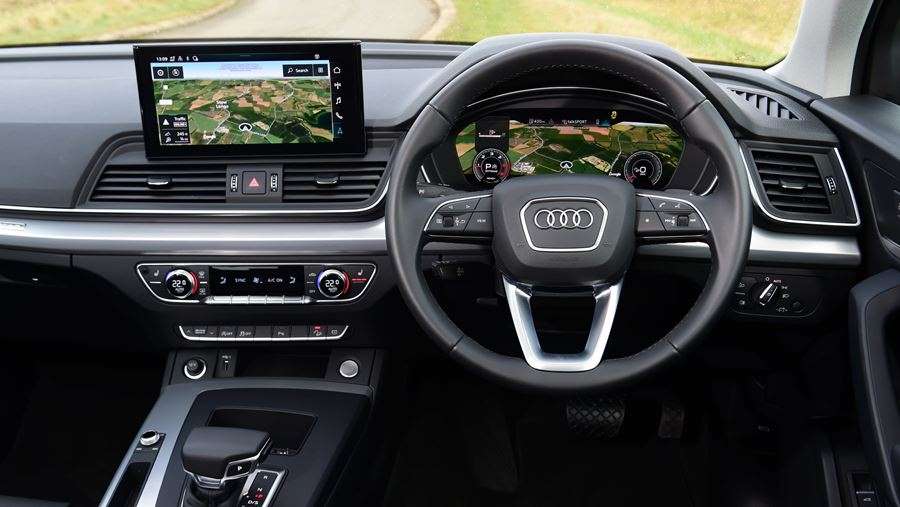
The Q5 inherits its predecessor’s full five-star Euro NCAP crash safety rating, which is an important feature for a family SUV like this.
Practicality is also key, and with a 550-litre boot – expanding to 1,520 litres with the useful 40:20:40 split rear seat bench folded down – there’s plenty of luggage room in the Audi. You even get a powered tailgate as standard to boost the level of flexibility on offer.
It’s not the biggest load bay in its class, but the Q5’s boot is far from cramped, and the same goes for the interior. You sit up high, as you’d expect in an SUV, and that’s possible because the seat base isn’t the longest, which brings your legs closer back towards you with a greater bend in your knees. But the Q5 offers plenty of legroom and doesn’t struggle for headroom either.
Practicality is pretty much unchanged then, and it’s a similar story when it comes to how the Q5 drives. That’s because it’s still based on the VW Group’s MLB Evo platform, with multi-link suspension all round.
Nestled under the bonnet of our test car is Audi’s updated 2.0-litre 40 TDI diesel, which produces 201bhp and a respectable 400Nm of torque. That’s 14bhp up on its predecessor thanks, in part, to the addition of a new 12-volt mild-hybrid system, which sees a belt-driven starter-generator (BSG) deliver a small hit of power and torque to assist when pulling away.
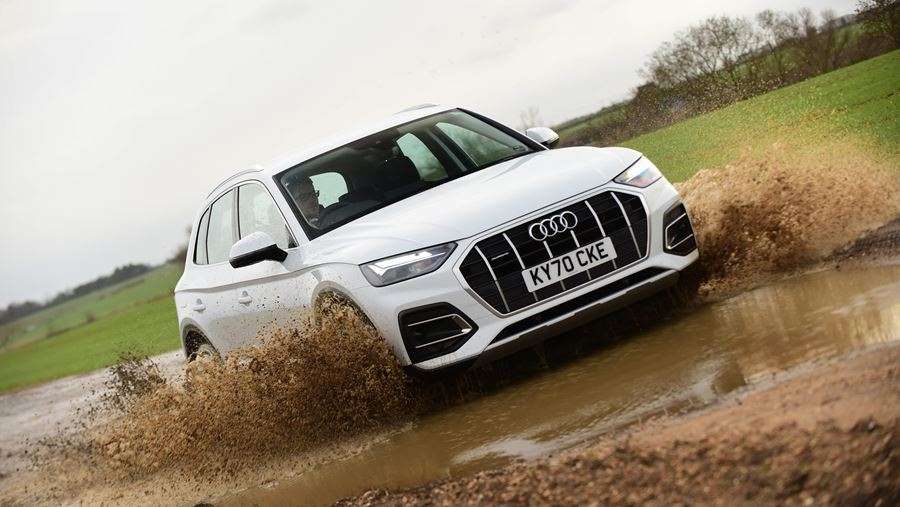
However, the mild-hybrid system has had a bigger impact on efficiency. The BSG charges a small lithium-ion battery when slowing down, which can be used to power ancillaries such as the climate control and electric power steering. In addition, the 2.0 TDI unit can cut out and coast at speeds of up to 99mph when you’re in the right driving mode, while the stop-start system activates below 13mph. It also makes things smoother when the engine does restart.
Claimed economy stands at 44.8mpg with 165g/km CO2 emissions, but while Audi is doing its best to make diesel less of a dirty word, it still feels like that in the current climate, the plug-in hybrid TFSI e will be a better bet for drivers seeking big efficiency and lower running costs.
Performance is strong, though, with some weight saving on engine components and the extra grunt delivering a 7.6-second 0-62mph time. In reality, nobody ever stretches their car’s performance to this degree all that regularly, but in conjunction with the seven-speed dual-clutch S tronic gearbox, the 400Nm of torque means it doesn’t kick down too many gears all that often when you want a more than moderate burst of acceleration.
Even if it does, the changes are pretty smooth – not whip-crack fast but well slurred to keep things relaxed – and the TDI unit’s sound is suppressed well enough that while it’s audible, it’s far from intrusive.
There’s little road noise too, helped by this car’s smaller wheels. They do look a little lost next to the big body, but they also improve the car’s ride quality.
The Q5 isn’t quite the most comfortable car in this class, but it rolls over ripples and imperfections in the road surface without too much fuss or transmitting a great level of shock or body movement, so it’s a smooth cruiser.
It isn’t the most dynamic option, though. The steering isn’t quite as direct as we’d like, even for an SUV (those big tyre sidewalls probably don’t help matters), while there’s some roll. But the Q5 is dynamically tidy enough to suffice; it’s comfort that matters more in a car like this, which it delivers, but the Audi is a bit dull when it comes to any sense of engagement.
Source: autoexpress.co.uk

